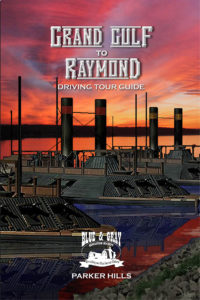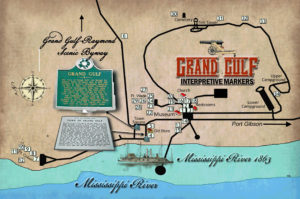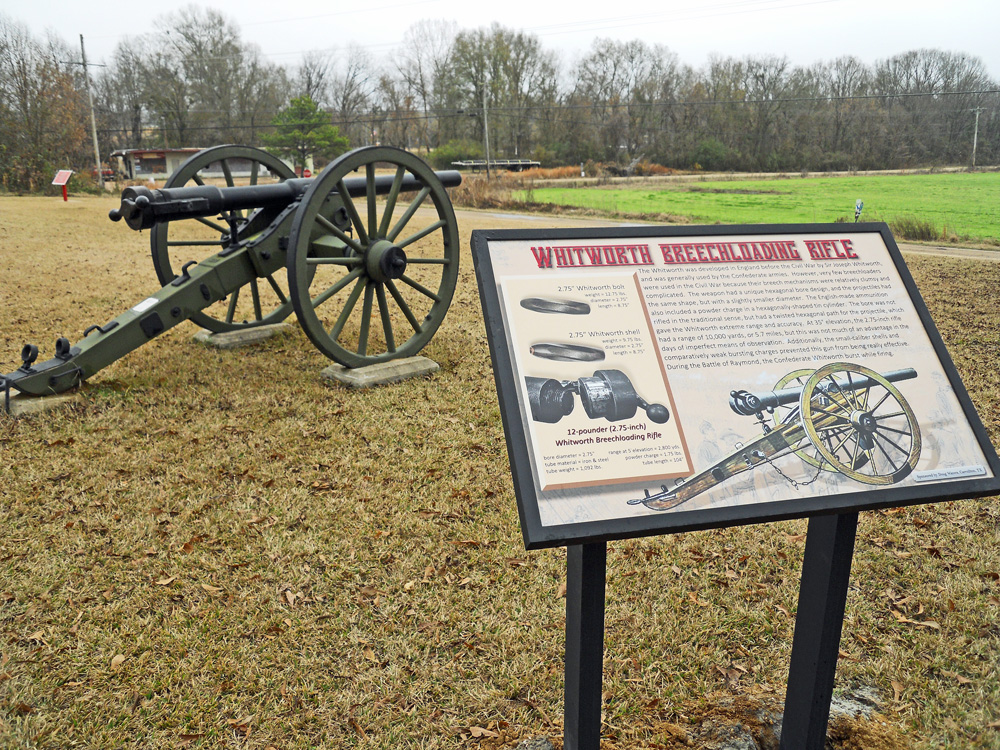
After a long holiday, BGES is pleased to announce that it has finished editing and submitted for publication its 20th scholarly monograph. The Grand Gulf to Raymond Driving Tour Guide is a content-rich, 96-page publication that reveals the significance of the old historic road that linked the formerly thriving river town of Grand Gulf on the Mississippi River with the agricultural and commercially productive plantations of central Mississippi. The publication has been enhanced by a detailed narrative and tour of Grand Gulf, which features the 34 sign refurbishment project BGES completed in 2018, and the May 12, 1863, Battle of Raymond, which BGES played a prominent role in interpreting.
Authored by historian Parker Hills, the monograph provides a commercially viable product that can be used by the state-owned and operated, but woefully underfunded Grand Gulf Military Park and the nonprofit preservation and interpretation organization Friends of Raymond to raise much-needed funds. The printing of this project was made possible by the generous donation of BGES member Doug Waters of Texas. Waters has been a strong supporter of Raymond by funding a reproduction cannon for the battlefield display, donating artifacts for the local museum, and helping to fund several BGES projects. He has immersed himself in the campaign and is one of a handful of students who have completed Hills’ signature Vicksburg Campaign series of eight tours conducted over a four-year period.

Hills, who lives in Clinton, Mississippi, which is only an 18-minute drive from the battlefield at Raymond, has been involved with BGES since 1995, and is the author of the best-selling monograph in BGES history—A Study in Warfighting, Nathan Bedford Forrest and the Battle of Brices Crossroads—published in 1995. This tome has sold in excess of 2,500 copies, is still stocked by the National Park Service and the Brices Crossroads battlefield, and has been continually used for military staff rides of that battlefield. Parker also is noteworthy for his coauthorship with the late Ed Bearss of Receding Tide: Vicksburg and Gettysburg, the Campaigns that Changed the Civil War.
The monograph that is currently being printed commences with a detailed history of Grand Gulf, to include Parker’s unique maps and art, and a discussion of the

battle of Grand Gulf while steering readers around the park. The substance of the monograph is a detailed discussion of Grant’s crossing of the Mississippi and the establishment of Grand Gulf as his forward logistics base as he moved to cut Confederate General Pemberton and Vicksburg off from sources of support and reinforcement. The significance of the byway as it climbs up from the town of Grand Gulf to the crest of the bluffs overlooking the Mississippi River is obvious, and the reader will gain a clear and open understanding of the complexities of this masterstroke by General Grant. After reaching Raymond, where the 50-mile byway ends, you are rewarded with a tour and discussion of the small but important Battle of Raymond. For those wishing more detail, in 2001 BGES also published a 96-page monograph by the late Warren Grabau, who was Parker’s good friend. This work is entitled Confusion Compounded, and it provides an expanded treatment of the Battle of Raymond. Grabau simply did not have the space for this additional material in his magisterial work, Ninety-Eight Days: A Geographer’s View of the Vicksburg Campaign.
The Vicksburg Campaign is a long-standing interest of the BGES since the Association for the Preservation of Civil War Sites did its groundbreaking Vicksburg Campaign Preservation Reports with BGES in 1995. Our footprints are all over the fulfillment of the “impressive interpretative potential of the Vicksburg Campaign” noted by the Civil War Sites Advisory Commission back in 1989. Monograph #20 is but our latest contribution.

You must be logged in to post a comment.